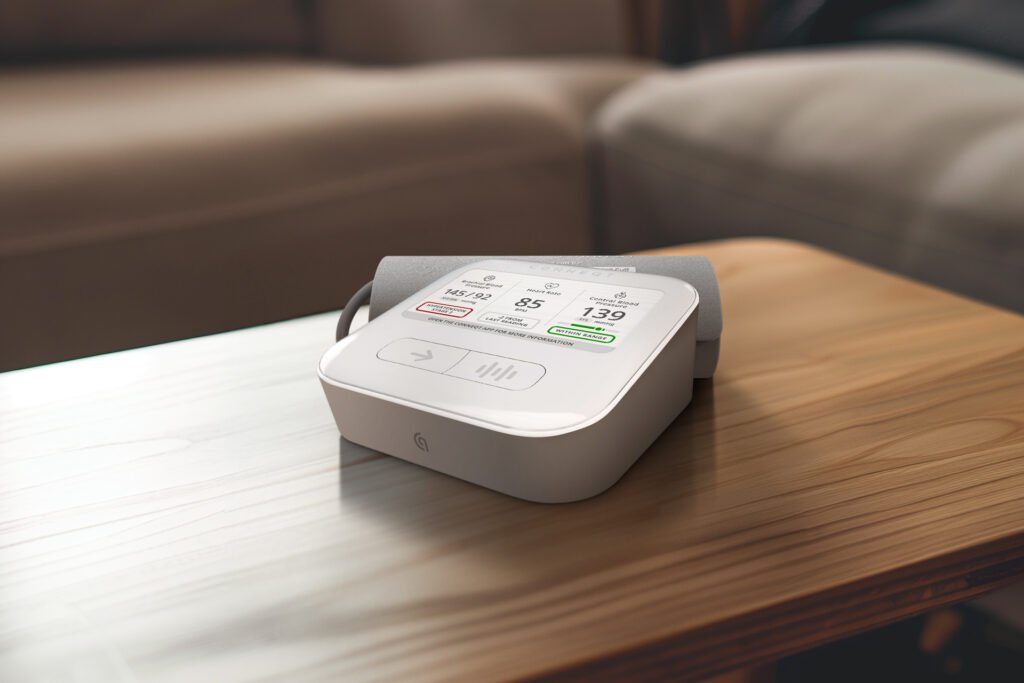
2024 Trends
January 16, 2024
Revolutionizing Cardiovascular Diagnostics: Cardiex at ARTERY 24
October 24, 2024CONNEQT Pulse Achieves Milestone with Inclusion on the Validated Device List

We are delighted to announce a significant milestone for our FDA-cleared CONNEQT Pulse vascular biometric monitor: its inclusion on the US Blood Pressure Validated Device List (VDL). This recognition underscores the reliability and accuracy of the CONNEQT Pulse, affirming its efficacy in cardiovascular monitoring.
Being listed on the VDL not only highlights the CONNEQT Pulse’s capability to deliver precise blood pressure measurements but also its compliance with rigorous validation standards that are respected worldwide. This endorsement is vital for both users and healthcare professionals, providing assurance that the device performs at the highest standards expected for clinical and personal health management.
Empowering Users and Enhancing Clinical Outcomes
What sets the CONNEQT Pulse apart is its ability to delve deeper into vascular health beyond traditional blood pressure measurements. By incorporating additional vascular biomarkers —such as measurements of arterial stiffness— this innovative device offers a more holistic understanding of cardiovascular well-being, enabling early detection and proactive management of cardiovascular risks. With its validated accuracy, the CONNEQT Pulse stands out as a tool that empowers individuals and supports healthcare professionals in delivering superior care.
For healthcare professionals, the CONNEQT Pulse serves as a crucial tool in enhancing clinical outcomes. With access to accurate, validated data from a device like the CONNEQT Pulse, clinicians can make more informed decisions about diagnosis, treatment plans, and patient care management. The ability to monitor changes in a patient’s vascular health can help detect potential health issues before they become severe, enabling interventions that can prevent serious conditions and reduce the need for emergency care or invasive procedures.
For individuals, the CONNEQT Pulse allows individuals to monitor their cardiovascular health with confidence. This is essential for those managing conditions like hypertension, where regular monitoring can significantly influence the course of treatment and outcomes. This can lead to more proactive health behaviors, such as adjusting diet, increasing physical activity, or complying more closely with prescribed medication regimes, which are all critical steps in managing or preventing heart-related illnesses.
A Paradigm Shift in Cardiovascular Monitoring
The inclusion of the CONNEQT Pulse on the Validated Device List marks the beginning of a transformative era in cardiovascular health monitoring. This device not only meets current standards for accuracy and reliability but also introduces advanced biomarkers like arterial stiffness into routine health assessments. Such innovations are set to redefine how we approach cardiovascular health, moving from reactive to preventive care models. The ability to monitor subtle changes and trends over time equips both individuals and healthcare providers with the tools necessary for early intervention, potentially altering the course of cardiovascular disease management.
“Brachial blood pressure measurements serve merely as a rough proxy for arterial stiffness and early vascular aging, key indicators of disease onset and progression,” explains Dr. Sanjeev Bhavnani, Chief Clinical Officer at Cardiex. “Being listed on the VDL confirms our device’s capability and accuracy, propelling us towards a future where monitoring is not just about detection but about prevention and proactive management of cardiovascular health and disease.”
The future of cardiovascular monitoring promises enhanced patient engagement and better clinical outcomes through technology such as the CONNEQT Pulse. With its validated accuracy and innovative features, the device is poised to play a pivotal role in this new paradigm, facilitating a shift towards more informed, data-driven health decisions. This not only improves individual health trajectories but also impacts broader public health outcomes by reducing the prevalence and severity of cardiovascular diseases.



